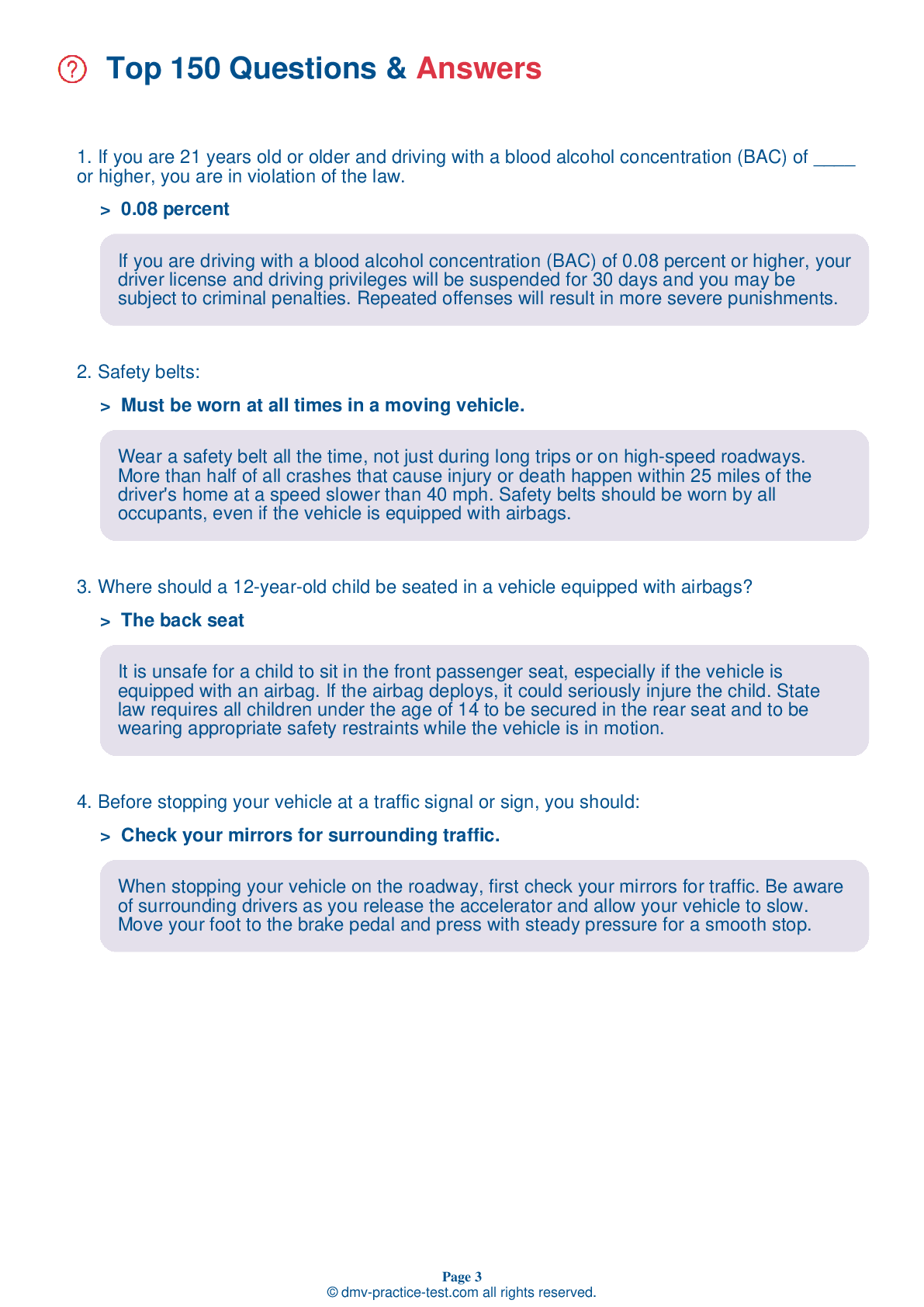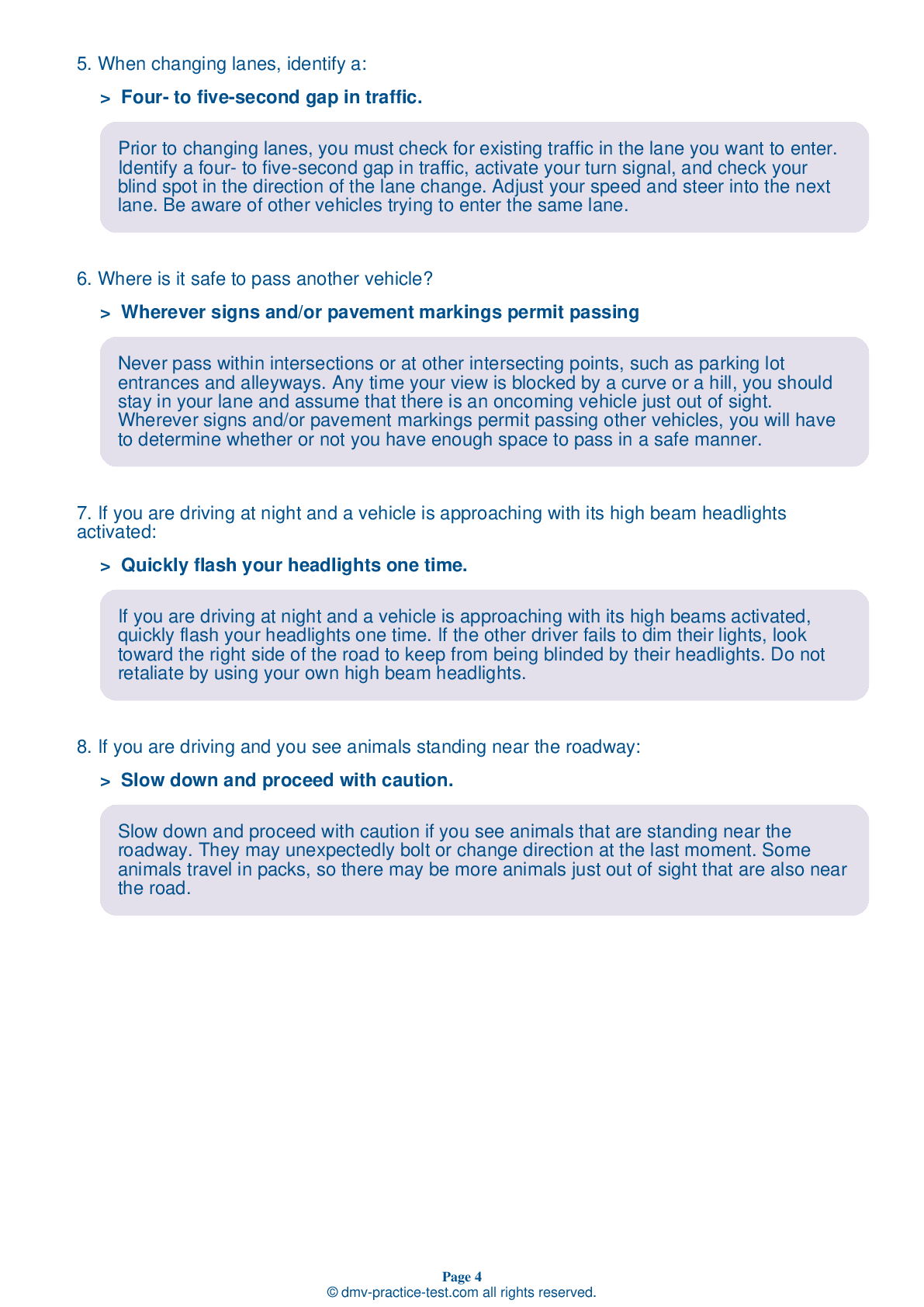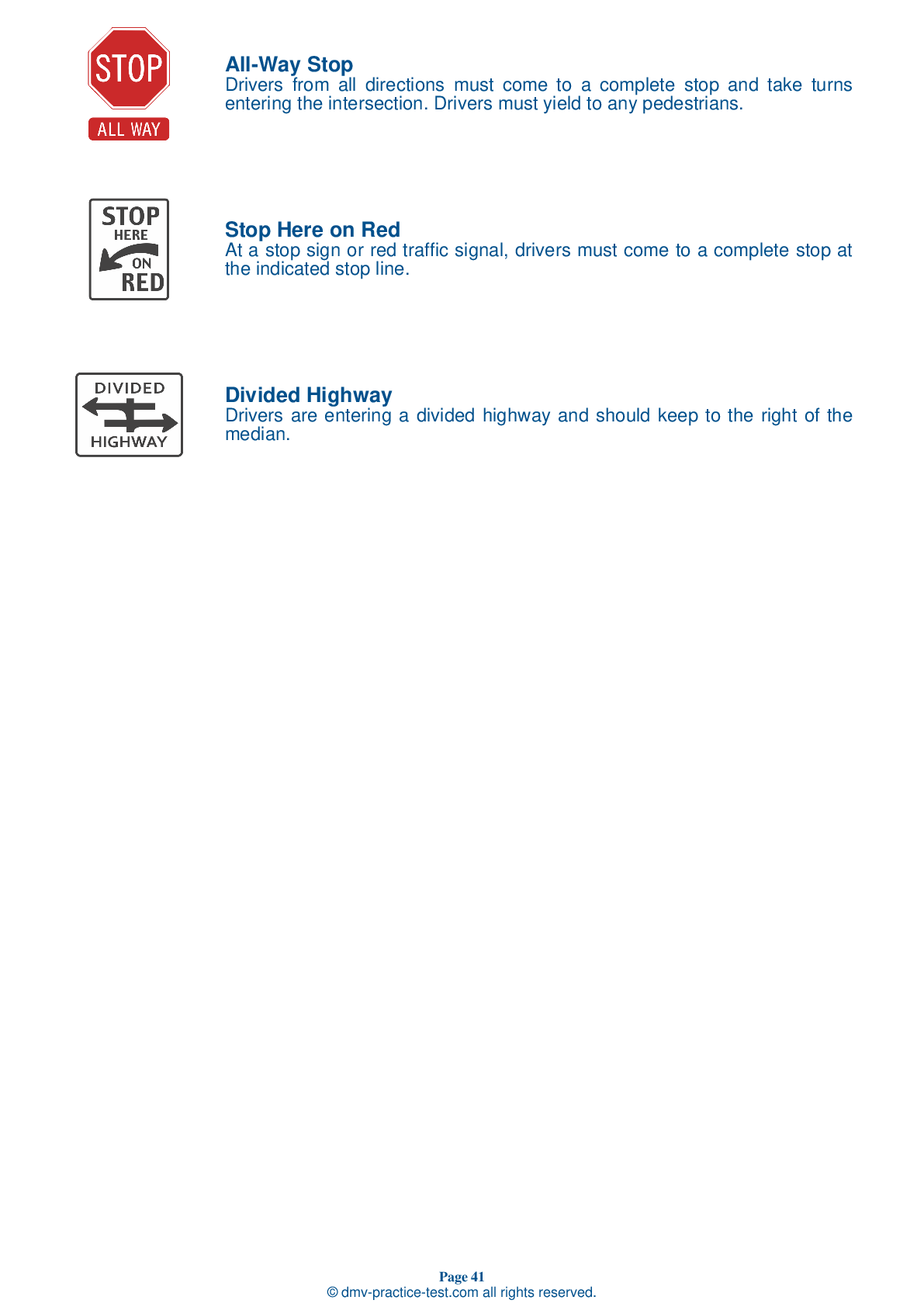FREE Kansas DMV Practice Test #3 Page 2 of 3
In Kansas, the DMV practise tests have been revised for January 2025. It includes questions based on the Kansas Driver Handbook's most essential traffic signals and regulations for 2025. Use actual questions that are very similar (often identical!) to the DMV driving permit test and driver's licence exam to study for the DMV driving permit test and driver's licence exam.
On the practise exam, each question gets a tip and explanation to help you remember the concepts. The written component of the official Kansas DMV test will include questions about traffic rules, traffic signs, and driving statutes, as well as information from the Driver Handbook.
To obtain a passing grade, you must correctly answer 20 of the 25 questions. Take our DMV practise exam to help you prepare for your Kansas instruction permit or driver's licence.
The DMV exam is available in several languages.
Using any kind of testing assistance will result in an automatic fail, and the DMV may take additional action against your driver's licence, so stay away from it.
9 . A broken yellow line beside a solid yellow line indicates that passing is:
When the center of the road is marked by a solid yellow line beside a broken yellow line, passing is permitted from the side next to the broken line and prohibited from the side next to the solid line.
10 . When driving on a slippery surface, such as snow or ice:
To prevent skidding on slippery surfaces, you should shift to a low gear before going down a steep hill. You should also follow farther behind the vehicle in front of you than you normally would. Quick stops should be avoided. Unless you have antilock brakes, pump the brakes to slow or stop.
11 . When driving on an interstate, to avoid traffic merging from on-ramps to your right, the best thing to do is to:
When driving on an interstate highway, be aware of upcoming on-ramps. When traffic permits, move out of the right-hand lane to allow vehicles to enter from the on-ramps to your right.
12 . If you want to pass a pedestrian who is walking along the roadway and an oncoming vehicle is approaching, you should:
If possible, try to only deal with one roadway hazard at a time. If you want to pass a pedestrian but an oncoming vehicle is approaching, slow down and let the vehicle pass. You may then pass the pedestrian if it is safe to do so.
13 . From top to bottom, the following is the proper order for traffic lights:
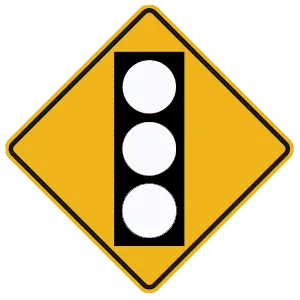
Warning signs are usually yellow with black markings. They alert you to conditions that are immediately ahead. This sign warns drivers about the presence of traffic signals at an intersection ahead.
14 . As your speed increases, it is important to:
Your vehicle's stopping distance increases as your speed increases. When driving at high speeds, it is important to look well ahead of your vehicle to allow yourself space to safely react to hazardous situations.
15 . An orange-colored sign like this means:
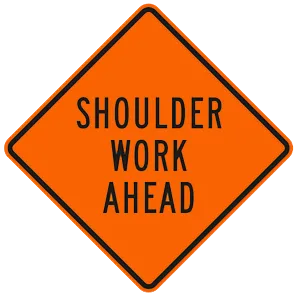
Orange-colored signs indicate construction areas. Proceed with caution.
16 . If you are driving and the rear end of your car starts skidding to the left, you should:
If your vehicle enters a skid, you should take your foot off of the brake and steer in the direction that you want to go. For example, if the rear of your vehicle is skidding to the left, you should steer to the left. This will help bring the front of the vehicle in line with the rear, thereby straightening out the vehicle's overall direction.
See the exact questions that will be on the 2025 Kansas DMV exam.
99.2% of people who use the cheat sheet pass the FIRST TIME
LT gives us an insight on how the cheat sheet provided her with all the study questions she needed before taking her test.
Joe initially studied with the handbook and failed his test, he eventually found us online, studied and pass his test the first time around.

